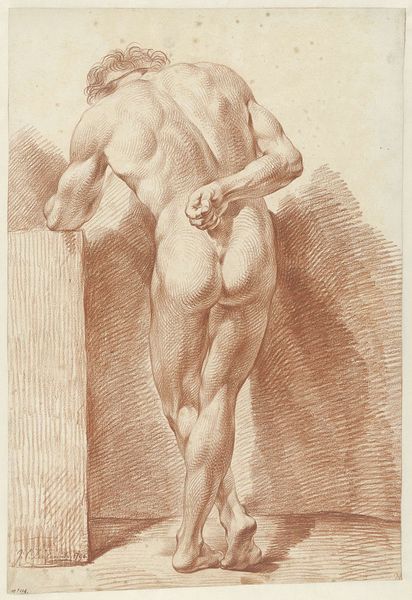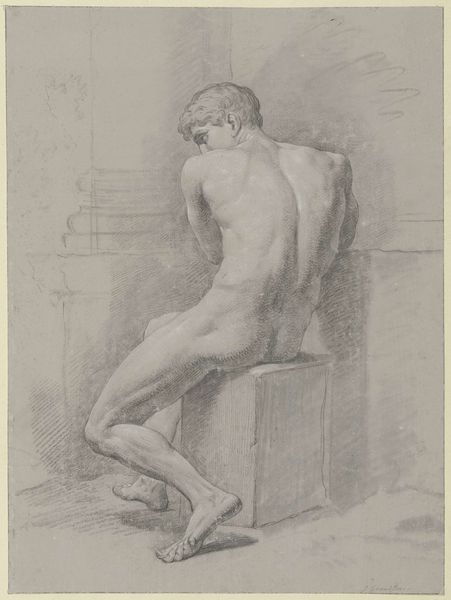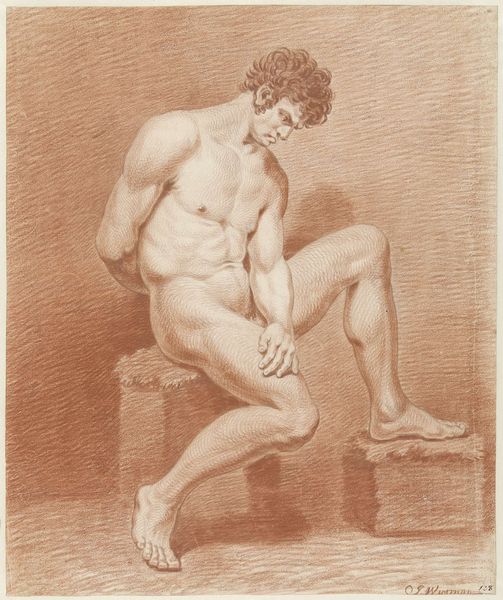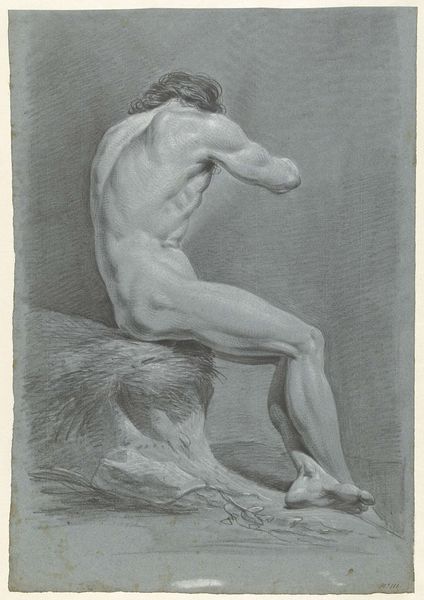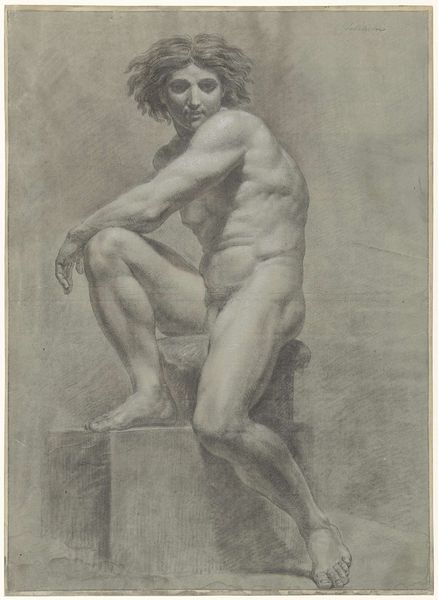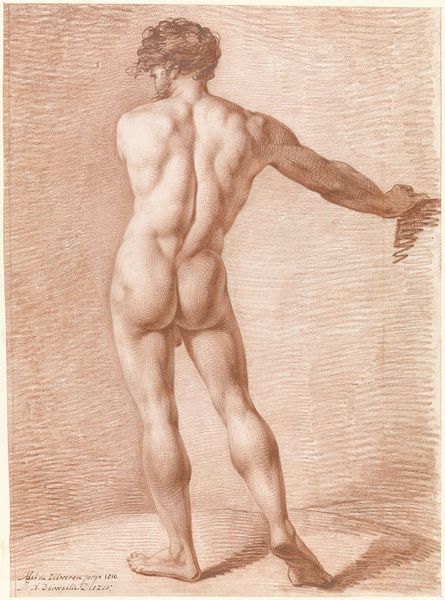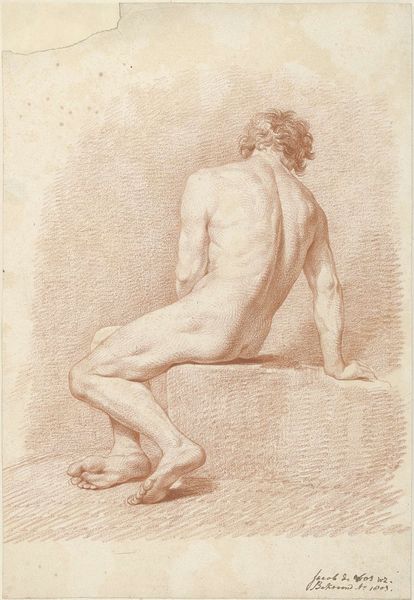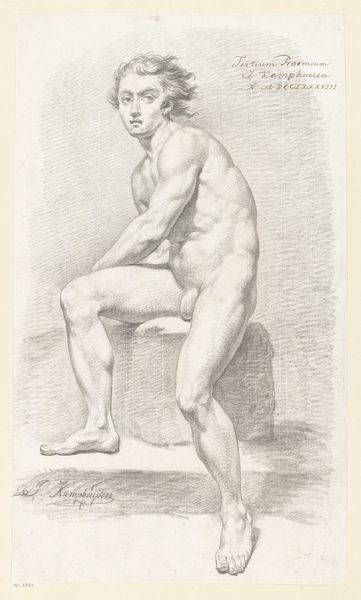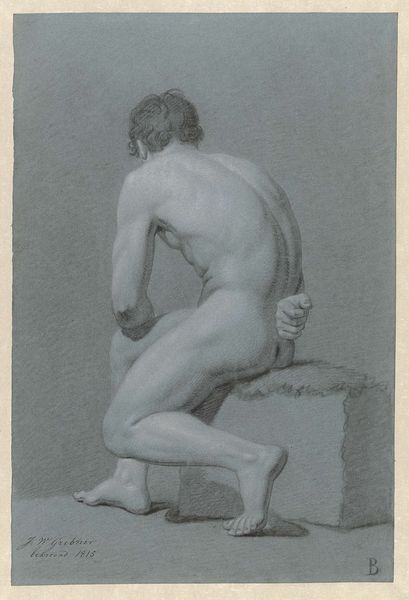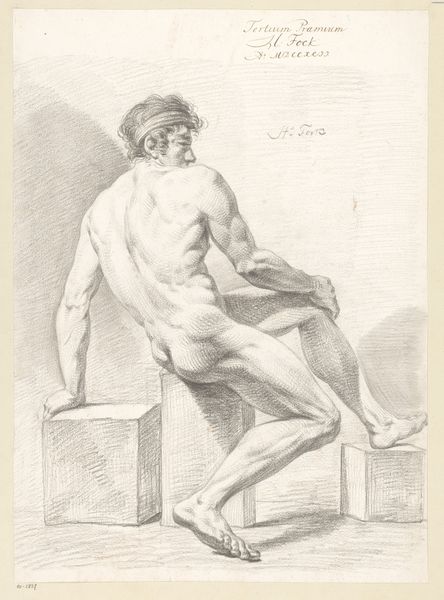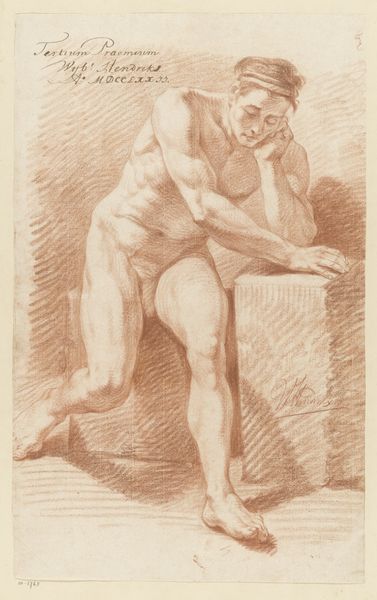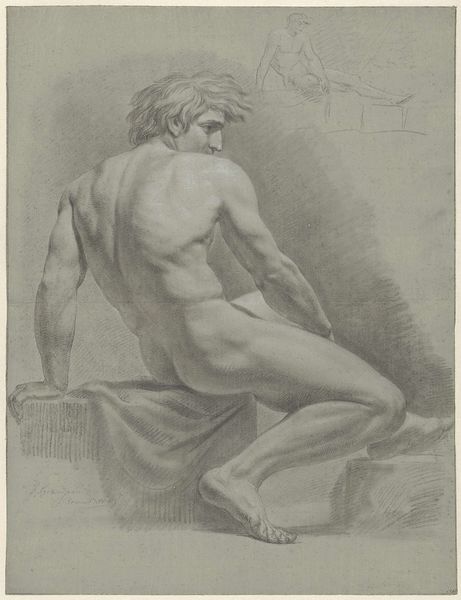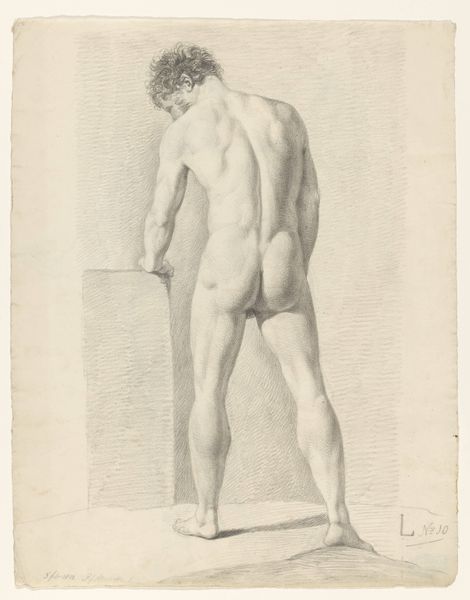
drawing, pencil
#
pencil drawn
#
drawing
#
pencil sketch
#
figuration
#
pencil drawing
#
pencil
#
portrait drawing
#
academic-art
#
nude
Dimensions: height 558 mm, width 329 mm
Copyright: Rijks Museum: Open Domain
Curator: A very serene and contemplative mood. Is it just me, or is there something both intimate and distant about this? Editor: It is indeed striking. We're looking at "Zittend mannelijk naakt, op de rug gezien," which translates to "Seated Male Nude, Seen from the Back." Christiaan Welmeer created this pencil drawing in 1791. Curator: Welmeer. This immediately strikes me as an academic study, situating it within a broader discourse about the male gaze, but also art education at the time. This probably served as both a study of the male form, and perhaps an unspoken declaration of power? Editor: The artist uses hatching and cross-hatching to sculpt the figure's muscles, accentuating the interplay of light and shadow across his back and shoulders. The simple, cubic structure on which he rests creates a stable, almost classical foundation for the composition. Note the almost geometric perfection of the rendering. Curator: While I see the classical undertones, it's impossible not to also note the potential inherent queerness within academic studies of the male nude during the Enlightenment era. Art became a field where unspoken desires and transgression found voice within accepted artistic parameters. This reminds me a little of Foucault’s thoughts on the panopticon. Editor: An interesting interpretation. Shifting our focus back to the aesthetic qualities, consider the delicate lines used to define the man’s hair and the subtle variations in tone that create a sense of volume. It's masterful, the pencil almost dances on the page. It breathes life. Curator: True. But to step back a little: can we consider that artists used classicism to justify male nudity in art? Male nudity becomes acceptable in some social contexts, such as exercise, medicine, war and art, especially if there is a classical aesthetic. What does that mean to modern audiences? Editor: A thought-provoking point that reminds us how social context can greatly influence an artist and his art. The ability to examine a pencil drawing like this through different cultural lenses reveals that academic art wasn’t simply about technical skill but potentially about a range of issues about race, class, gender, and cultural power structures. Curator: Absolutely. It underscores how vital interdisciplinary approaches are in fully appreciating historical art. Editor: Indeed. These additional considerations offer a more profound engagement with "Zittend mannelijk naakt, op de rug gezien.”
Comments
No comments
Be the first to comment and join the conversation on the ultimate creative platform.

